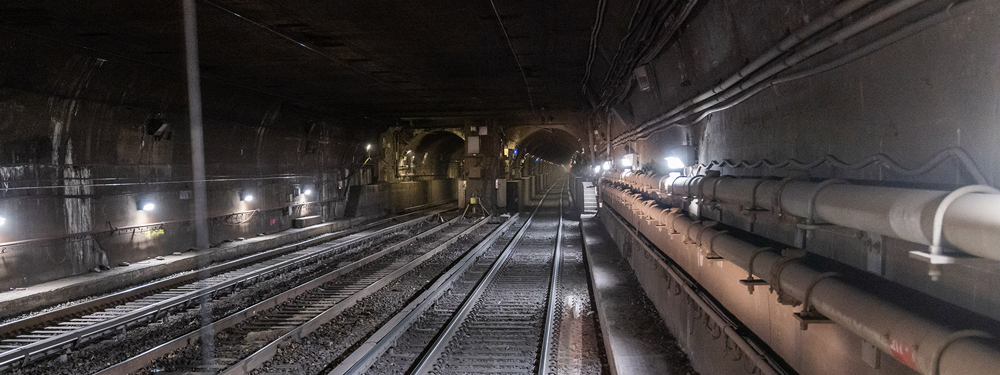The year started poorly in February, when Congress began openly challenging Amtrak management policies. These include criticisms Amtrak’s moves to reduce or outsource staffing at stations and call centers, reduce food service, put restrictions on private cars, and attempt to truncate routes. It was triggered by Amtrak’s President and CEO Richard Anderson’s remarks at a Feb. 7 hearing, but continued at subsequent hearings into November after either Anderson or Executive Vice President and Chief Commercial Officer Stephen Gardner kept insisting that Amtrak’s mission was to reduce “operating losses” (as Amtrak calculated them) rather than operate a national network.
Though management continued to double down on the cutbacks, lawmakers made it clear that Amtrak’s annual appropriation comes with prescriptive strings.
By summertime, the myth that Chicago is — or may soon be — the center of a revived regional passenger rail hub had a spoke removed to Indianapolis after the four-times-a-week Chicago-Indianapolis Hoosier State ended its helter-skelter tenure June 30. To be fair, the Hoosier State lost support from the State of Indiana — but the loss remains.
The two major Midwestern cities are now only connected by rail with Amtrak’s thrice-weekly Cardinal — itself a perennial object of rumor and speculative demise. But now, the passenger service lacks the much-loved traditional dining car service.
That’s because, as of Oct. 1, coach passengers are banned from dining cars on Crescent, Silver Meteor, Cardinal, and City of New Orleans when chefs and waiters were cut from Amtrak’s budgets. Sleeping car passengers on those trains get exclusive use of the diners to eat new selections from what Amtrak officials have said is an “evolving” menu featuring five pre-packaged entrees-in-a-bowl with a tiny side salad. The Capitol Limited and Lake Shore Limited’s “contemporary” meal was supplanted by the new tray meals. Dubbed “Flexible” because passengers can eat whenever they want and aren’t required to sit with other travelers, the meals are now served at lunch and dinner on six trains — no side substitutions are permitted to vary the dining “experience.”
But the news wasn’t entirely bad. In March, the only new trains on Amtrak’s network outside the Northeast Corridor were state supported: An additional round-trip to Norfolk, Va., in March and a two-year “pilot” extension of some New Haven-Hartford, Conn. shuttles to Greenfield, Mass., without fanfare on Aug. 30. Along with minor service adjustments, Amtrak did add a weekday New York-Washington Acela Nonstop on Sept. 22.
And, in a spate of positive news, CSX Transportation and the Commonwealth of Virginia announced in December that they’re collaborating on improving rail service between Washington and Richmond, Va. — essentially extending the Northeast Corridor. Future development may even extend, one day, to North Carolina.
TO BE CONTINUED….
— Bob Johnston contributed to this report.















Well put M. Singer, but you and I know that Ol’ Slash and Burn Anderson and his henchmen only know how to tear Amtrak down, not build it up. Delta Dick is only beholden to his boss. You know the self-proclaimed genius that knows more than the generals and the intelligence agencies.
College town train service.
Market reality vs. Amtrak’s perception that evidences Amtrak knows less about marketing than it does about diners and menus:
Amtrak has yet to learn and apply critical knowledge of the marketplace to avoid its perpetual inconsistencies, e.g., on-board services; pathetic generational attack to cover-up cost cutting, e.g., discarding dining cars east of the Mississippi by blaming the millennials; service oxymorons, e.g., lounge cars incapable of crafting cocktails; thoughtless racial intonations, e.g., refusing dining car service to coach customers on overnight trains to New YorkNew Orleans/Washington; promoting a fatal self-destructive persona, e.g., consistently dissing the overnight trains as financial losers that nobody but old, retired folks would ride.
Given the ultimate in a politicized Board incapable of embracing the concepts why Amtrak was created, it is quite evidential for Congress to now mandate DOT/FRA to identify options to the “new and improved business model” for Amtrak, including a revamped PRIIA to either fully charge the NEC states, or, cease the exorbitant full cost allocation for those fortunate not to be on the NEC. State-supported programs should be allowed to work outside the confines of Amtrak’s rigid, one size fits all, monopoly, including: competitive bidding (and vetting) T&E crews, power and consists, catering; feds to offer states same insurance program and track access fees Amtrak enjoys. Smart states, as in California, will negotiate with Class 1s a fair market value in order to increase frequencies and faster schedules.
Non-NEC states should not be subsidizing the NEC at the expense towards improving their own mobility and economic development needs.